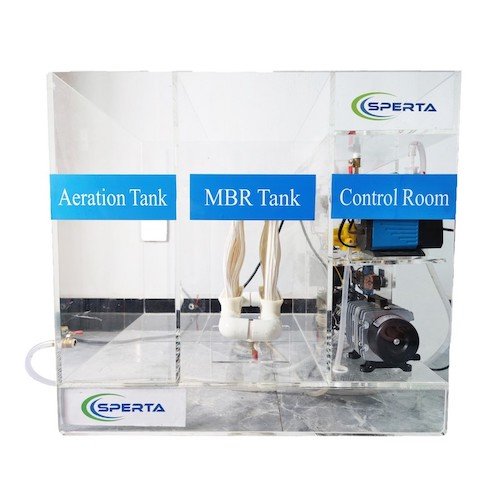Membrane Bioreactor (MBR) systems are cores of modern wastewater treatment processes. It combines membrane filtration with biological treatment. But the whole system suffers from membranes getting clogged. When your arteries get blocked, it’s a health hazard. The same is true for MBR systems. The streets of the MBR system are getting blocked, threatening the health of your water treatment process. It is the challenge of membrane contamination.
A combination of operational strategy, regular maintenance, and monitoring can prevent this. There are several options you can use to extend the life of your membrane and ensure the smooth operation of your MBR system. The first is to optimize the pretreatment process, the second is to maintain the correct operating parameters, and the last is to adopt the appropriate cleaning program.
Keeping your MBR membranes clean isn’t just about system efficiency; it’s about cost-saving and sustaining high-quality water output. Let’s dive into how to keep those membranes clear and your water clean.

What Causes MBR Membrane Fouling?
The accumulation of particles, microorganisms, and other substances on the membrane surface usually causes membrane fouling. This pollution can result in reduced permeability and increased transmembrane pressure. If not addressed in time, this will not only affect the system’s efficiency but can also raise costs. Note that otherwise, you will need to change the membrane more frequently.
Operational Best Practices: How Do They Help?
The first line of defense against membrane fouling is operational controls. This line of defense involves adjusting cross-flow and aeration rates to optimal levels. It can ensure that the system is well-stocked and utilized. Regular monitoring of these parameters can prevent scaling. It saves time and effort in the long run.
Can Chemical Cleaning Regimens Extend Membrane Life?
Yes, they can. The idea is very plump, but the reality is very skinny. While the goal is to keep the system running with minimal chemical intervention, the truth must meet expectations. The fact is that some level of chemical cleaning is often necessary. It’s vital to find the key to the balance. In order not to damage the membrane, the correct way to remove contaminants is to use appropriate chemicals.
Physical Cleaning Techniques: Are They Effective?
Two physical cleaning methods can effectively dislodge particles from the membrane surface. One is backwashing, and the other is air scouring. It is very crucial to incorporate these into your maintenance routine. It can enhance the longevity of your membranes and ensure consistent water quality.

The Role of Monitoring in Fouling Prevention
Real-time data on membrane performance rely on online sensors and automatic control systems. So it can prompt responses to any signs of fouling. We can reduce the risk of severe fouling in this proactive approach. It also affects the downtime associated with cleaning or replacing the membrane.
Innovative Approaches to Tackling Fouling: What’s New?
The development of anti-fouling membrane materials and the integration of intelligent sensor technology are exciting advancements. These innovations will revolutionize the approach to prevent fouling. This innovation provides a more resilient system and more accurate fouling detection.
Conclusion
Proactive management, routine maintenance, and technological advances will help prevent contamination of MBR membranes.
The above is information about the MBR membrane fouling. If you still have questions about the membrane bioreactor or need to purchase MBR membranes, don’t hesitate to contact SPERTA.
Shanghai SPERTA Environmental Technology Co., Ltd. has specialized in producing water treatment products for many years. The company has the core technology of producing MBR membrane components. It has a high production capacity, aiming to build a high-quality brand of MBR production and sales all over the world. If you have any needs, please feel free to contact us.












